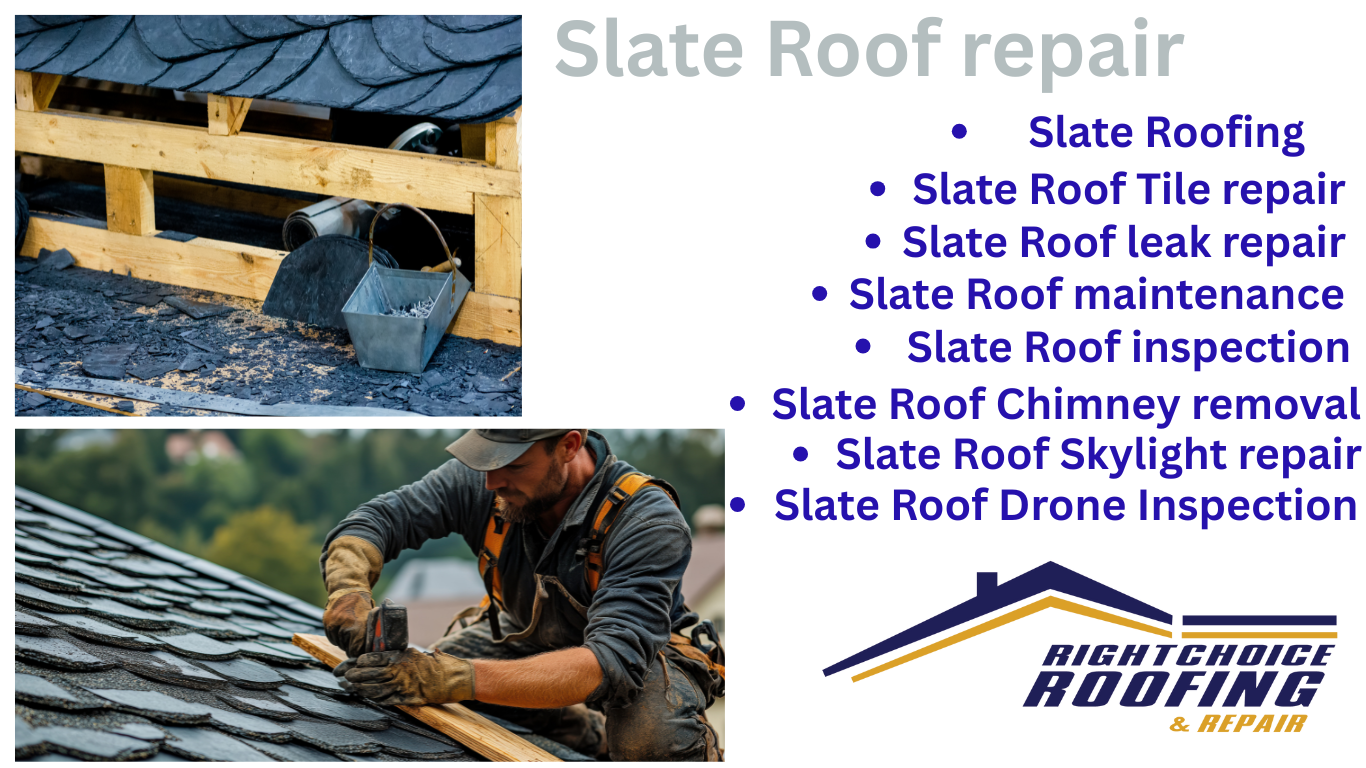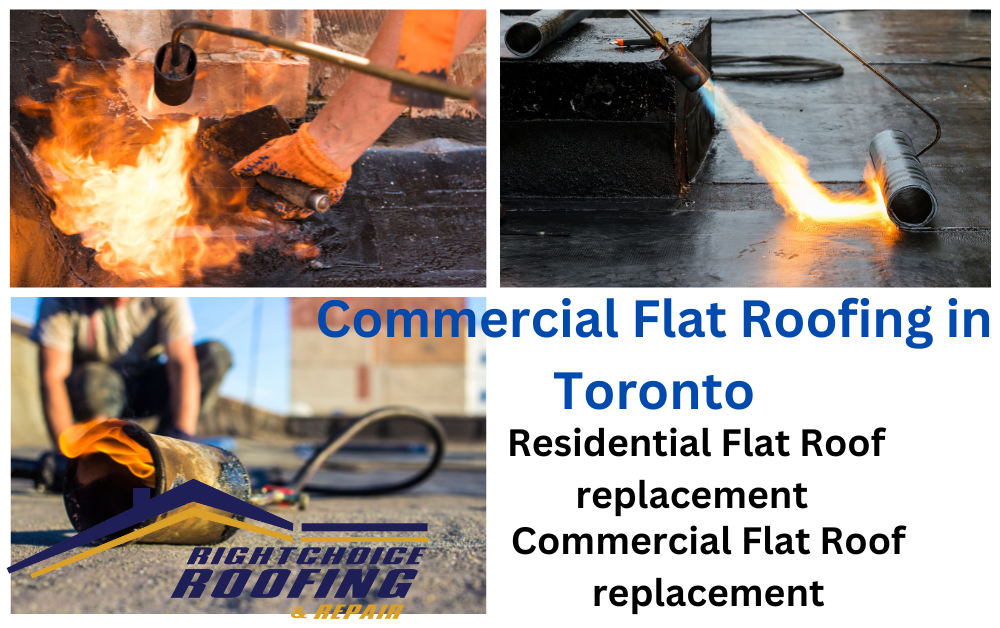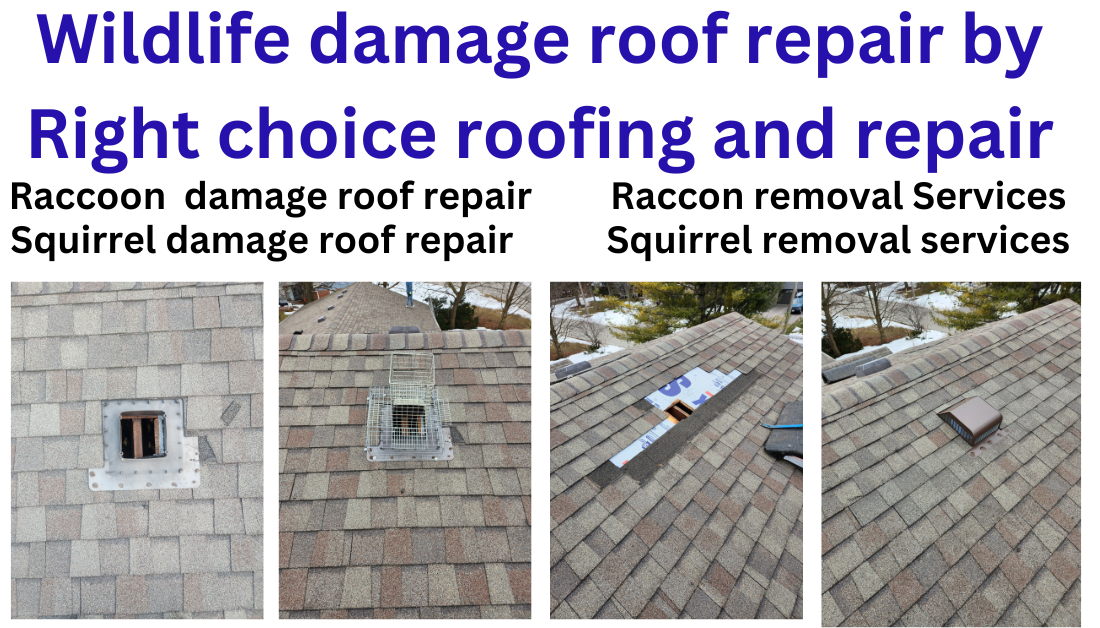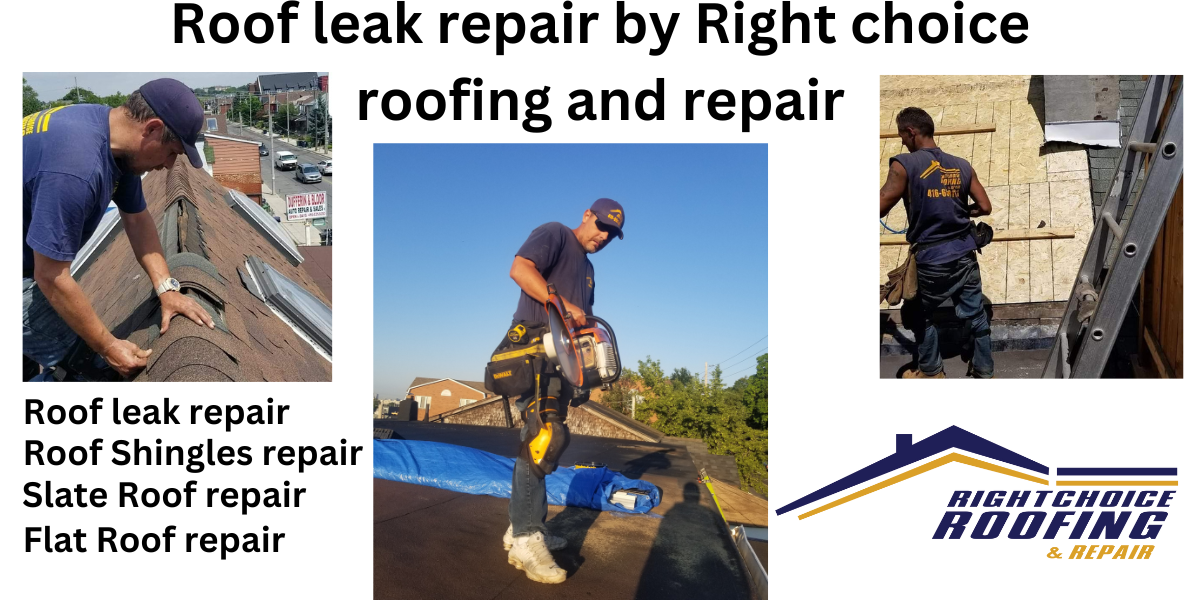1. The Historical Significance of Slate Roofs in Toronto
1.1. Toronto’s architectural heritage and the role of slate roofs
Slate roofing and Slate Roof repair by Right choice roofing and repair-Toronto’s skyline is a beautiful mix of old and new, with many historic buildings sporting elegant slate roofs. These roofs aren’t just practical; they’re like time capsules that tell stories of our city’s past. Walking through neighborhoods like Cabbagetown or Rosedale, you can’t help but admire the charming slate-roofed homes that have stood the test of time.
1.2. The evolution of slate roofing techniques in the city
Slate roofing in Toronto has come a long way since the early days. Back in the 19th century, most slate was imported from Wales or Vermont. Roofers had to be incredibly skilled to work with this tricky material. Over time, we’ve seen changes in how slate is cut, transported, and installed. Today’s slate roofers blend traditional methods with modern tools to keep these beautiful roofs in top shape.
1.3. Notable historic buildings with slate roofs in Toronto
Some of Toronto’s most famous buildings proudly wear slate roofs. Casa Loma, with its fairy-tale turrets, is a prime example. The Ontario Legislative Building at Queen’s Park is another stunner. Even the University of Toronto has several buildings with gorgeous slate roofs. These structures remind us of the lasting beauty and durability of slate.
2. Understanding Slate as a Roofing Material
2.1. Properties and benefits of slate for roofing
Slate is nature’s own roofing material. It’s incredibly durable, fire-resistant, and can last for centuries with proper care. Plus, it’s eco-friendly since it’s a natural stone. Slate roofs also add a touch of elegance that’s hard to match with other materials. They’re like the fine wine of roofing – they only get better with age!
2.2. Types of slate commonly used in Toronto’s historic homes
In Toronto, you’ll find a variety of slate types. Some common ones include:
- Vermont slate: Known for its rich colors and durability
- Welsh slate: Prized for its purple-grey hues and longevity
- Canadian slate: Sourced from Quebec, it’s a local favorite
Each type has its own unique characteristics, adding to the diverse beauty of Toronto’s roofscape.
2.3. Lifespan and durability of slate roofs
A well-maintained slate roof can last 100 years or more. I’ve seen slate roofs in Toronto that are older than my grandparents and still going strong! This longevity is one of the reasons why preserving these roofs is so important for our city’s heritage.
3. Common Issues with Historic Slate Roofs
3.1. Weather-related damage and wear
Toronto’s weather can be tough on roofs. Freezing winters, hot summers, and everything in between can take their toll. Ice dams, for instance, can be a real headache for slate roofs. And let’s not forget about those gusty winds that can loosen or dislodge slate tiles.
3.2. Structural problems and their impact on slate roofs
Sometimes, it’s not just about the slate itself. The underlying structure can cause issues too. Sagging rafters or deteriorating sheathing can lead to big problems for a slate roof. It’s like trying to put a fancy hat on a wobbly head – it just doesn’t work well.
3.3. Previous repair attempts and their consequences
I’ve seen my fair share of DIY repair attempts gone wrong. Using the wrong materials or techniques can do more harm than good. It’s heartbreaking to see a beautiful historic roof patched with modern asphalt shingles or sealed with incompatible materials.
4. The Slate Roof Repair Process
4.1. Assessment and documentation of roof condition
The first step in any slate roof repair is a thorough inspection. This isn’t just a quick look-see; it’s a detailed assessment of every nook and cranny. We document everything, from loose slates to worn flashings. It’s like being a roof detective, piecing together clues to understand what’s going on up there.
4.2. Sourcing appropriate materials for repairs
Finding the right materials is crucial. We can’t just pop down to the local hardware store for this stuff. Sometimes, we need to source slate from salvage yards or specialty suppliers to match the original roof. It’s a bit like treasure hunting, but for rocks!
4.3. Techniques for replacing and repairing individual slate tiles
Repairing slate tiles is a delicate art. We use specialized tools like slate rippers and hammers to carefully remove damaged tiles without disturbing the surrounding ones. Then, we slide in new or salvaged slates and secure them with copper nails and slate hooks. It’s a bit like performing surgery on a roof!
5. Preserving Authenticity in Slate Roof Repairs

5.1. Balancing historical accuracy with modern building codes
This can be a real tightrope walk. We want to keep the roof as authentic as possible, but we also need to meet current safety standards. Sometimes, it means getting creative with how we integrate modern materials or techniques while maintaining the historic look.
5.2. Working with heritage conservation experts
Teaming up with heritage experts is a must for these projects. They bring a wealth of knowledge about historical building techniques and materials. It’s like having a time-traveling architect on your side!
5.3. Documenting the repair process for future reference
We keep detailed records of all our repairs. Photos, material lists, techniques used – everything gets documented. This isn’t just for our own records; it’s for future generations of roofers who might work on the same building. It’s our way of passing the torch, so to speak.
6. Maintaining Slate Roofs for Long-Term Preservation
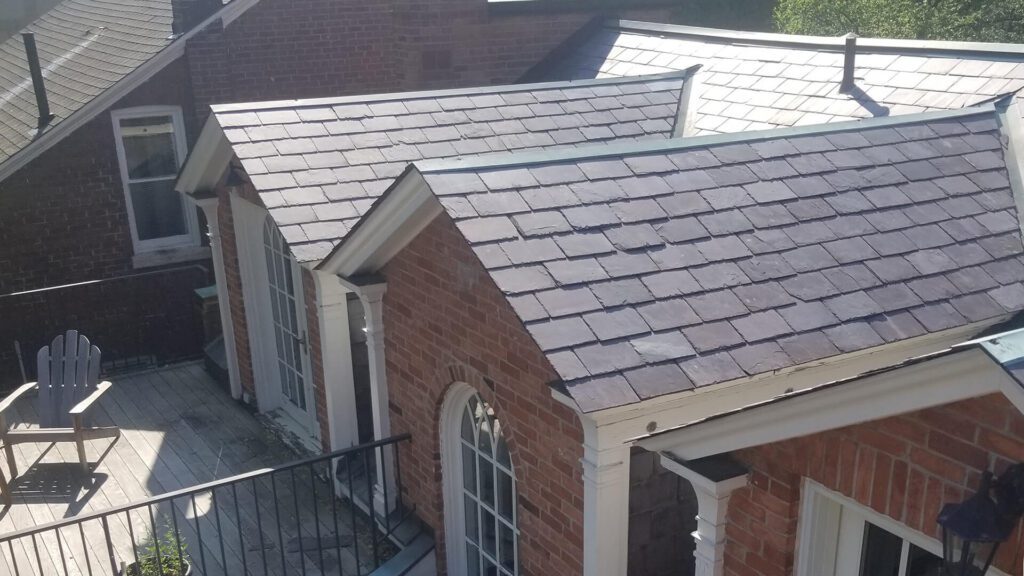
6.1. Regular inspection and cleaning procedures
Regular check-ups are key to keeping a slate roof healthy. We recommend inspections at least once a year, and after any major storms. Cleaning is important too – those Toronto maple leaves may look pretty, but they can trap moisture and cause problems if left on the roof.
6.2. Preventive measures to extend roof lifespan
There are lots of little things we can do to help a slate roof last longer. Keeping gutters clean, ensuring proper attic ventilation, and addressing small issues before they become big problems are all part of the game plan.
6.3. Educating homeowners on proper care and maintenance
I love chatting with homeowners about their slate roofs. Many are surprised to learn how simple maintenance can make a big difference. We provide tips on what to look out for and when to call in the pros. It’s all about empowering homeowners to be good stewards of their historic homes.
7. The Role of Professional Slate Roofers in Toronto
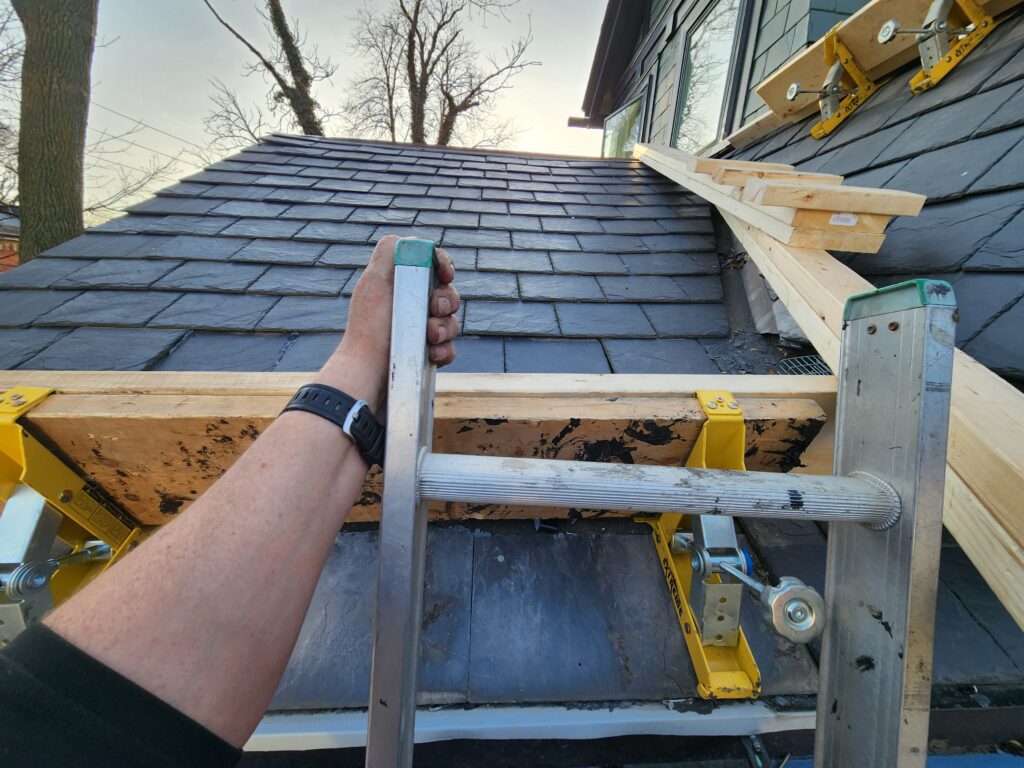
7.1. Specialized skills and training required for slate roof repair
Slate roofing is a specialized skill that takes years to master. It’s not something you can learn from a YouTube video! We undergo extensive training and apprenticeships to learn the ins and outs of working with this unique material.
7.2. Collaboration with architects and heritage specialists
Working on historic roofs often means collaborating with a team of experts. Architects, heritage specialists, and even historians might be involved in a project. It’s like being part of a superhero team, but for old buildings!
7.3. Certifications and qualifications to look for in slate roof experts
When choosing a slate roofer, look for certifications from organizations like the National Slate Association or the Slate Roofing Contractors Association. Experience is key too – ask about their track record with historic buildings in Toronto.
Summary
Preserving Toronto’s slate roofs is about more than just fixing leaks. It’s about maintaining our city’s character and history. With proper care and expert repairs, these beautiful roofs can continue to grace our skyline for generations to come.
FAQs
- How long does a typical slate roof last in Toronto’s climate?
With proper maintenance, a slate roof in Toronto can last 100 years or more. Our climate actually helps preserve slate, as the freeze-thaw cycles can make the slate stronger over time. - What are the signs that my historic slate roof needs repair?
Look out for missing or slipped slates, debris in gutters, or damp spots in your attic. If you can see daylight through your roof boards, that’s a definite sign you need repairs! - Can I replace my slate roof with modern materials while maintaining historical authenticity?
It’s possible to use synthetic slate that mimics the look of natural slate. However, for designated heritage buildings, you’ll need to consult with heritage authorities before making any changes. - How often should I have my slate roof inspected?
We recommend an annual inspection, ideally in the fall after the leaves have fallen. This allows us to catch any issues before winter sets in.
Are there any grants or financial assistance programs for repairing historic slate roofs in Toronto?
Yes, there are several programs available. The City of Toronto offers heritage grants for designated properties, and there are also tax rebates for heritage conservation work. It’s worth checking with the city’s Heritage Preservation Services for the most up-to-date information.






